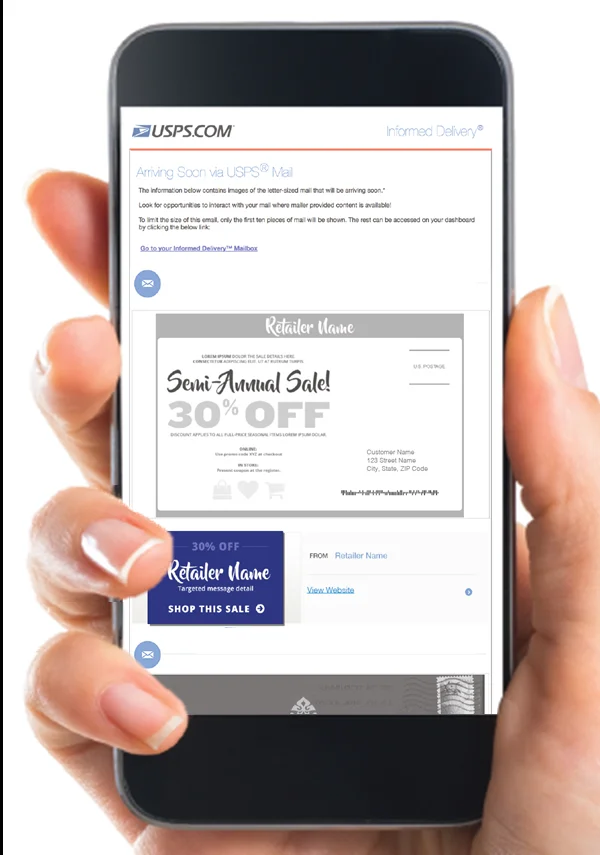The Humble Mailbox Just Got a Genius Upgrade. Here's Why It's a Bigger Deal Than You Think.
There's a certain magic to physical mail, isn't there? A quiet, analog ritual in our overwhelmingly digital lives. It’s the slight heft of a magazine, the crisp texture of an unexpected letter from a friend, the tangible promise of a package on the doorstep. For decades, that experience has been a one-way street—a passive waiting game. We wait for the rumble of the truck, the clank of the mailbox lid. But what if that entire process, that last physical mile of information delivery, could be flipped on its head?
What if you knew exactly what was coming before it arrived?
This is the quiet revolution being delivered by the United States Postal Service, an institution many had written off as a relic. With its new standalone Informed Delivery mobile app, the USPS has done something far more profound than just create another package tracker. They’ve built a digital bridge to the physical world, and frankly, the implications are staggering. When I first downloaded this and saw the crisp, black-and-white scan of a letter addressed to me—a letter that was still hours away in a truck somewhere—I honestly just smiled. It felt like a little piece of the future had arrived, delivered by one of the oldest services in the country.
This is the kind of breakthrough that reminds me why I got into this field in the first place. It’s not about flashy gadgets; it’s about elegant solutions that reshape our daily interactions with the world around us.
The Ghost in the Mailbox
Let’s get the basics out of the way. On the surface, the Informed Delivery app is a masterclass in convenience. It sends you a push notification with scanned, grayscale images of the letter-sized mail scheduled to arrive in your box that day. It lets you track packages with terrifying precision, schedule pickups so you never have to see the inside of a post office again, and even order stamps from your couch. It uses biometric login for security and lets you create shipping labels on the fly. These are all fantastic, user-centric features.
But to see this as just a convenience play is to miss the forest for the trees.

What the USPS has actually built is a digital manifest for your physical life. In simpler terms, it’s a daily inventory of the real-world information headed your way. Think of it like a digital harbinger, an advance scout for the physical items about to enter your home. This simple act of digitization—creating a "ghost image" of a physical object moving through a logistics network—is a paradigm shift. It transforms the mailbox from a passive receptacle into an interactive, intelligent node in your personal information ecosystem.
For a century and a half, the relationship has been simple: the Postal Service pushes, and we receive. Now, for the first time, we can pull. We can see, manage, and anticipate. It's the difference between waiting for a broadcast to air and pulling up a streaming service on demand. And why does this matter so much? Because it rebuilds a relationship with a public institution on modern, digital terms.
More Than Just Tracking a Birthday Card
This app isn't an isolated project. It's a cornerstone of the USPS's massive 10-year "Delivering for America" plan, a sprawling initiative to drag a foundational piece of American infrastructure into the 21st century. They’re rolling out 24/7 smart lockers, redesigning lobbies to feel less like a bureaucratic nightmare and more like a tech hub, and upgrading their self-service kiosks. This isn't just a fresh coat of paint; it's a fundamental rewiring of the entire organization.
This evolution is as significant for the Postal Service as the transition from the Pony Express to the railroad. That wasn't just a speed upgrade; it was a change in the fundamental capacity and reliability of the network. The same is happening now, but in the digital realm.
And having this kind of reliable, government-backed information channel is more critical than ever. We live in an age where institutional trust is fragile. We see critical federal initiatives waver—just look at recent reports where FEMA halts preparedness grants in some regions, leaving communities to figure things out on their own. That kind of uncertainty can be destabilizing. In stark contrast, the USPS is doubling down on its core mission of universal, reliable delivery and reinforcing it with a powerful digital layer of trust and transparency.
This is where my mind really starts racing. What this platform could become is the truly exciting part—imagine secure digital document delivery from the IRS or SSA, a verified channel for local election information that cuts through the noise, a way to digitize important forms right from the app without ever touching a scanner, it’s a foundational piece of public digital infrastructure that we desperately need.
Of course, this journey isn't without its own profound responsibilities. Handing a government agency a digital preview of our mail requires an immense and ongoing commitment to data privacy and ironclad security. As users, we have to demand absolute transparency and best-in-class encryption as this service evolves. The potential is limitless, but only if it’s built on a bedrock of unshakeable trust. What other services could be built on this platform? How could it change the way we interact with official correspondence, for good?
The Last Mile Just Became the First Click
Let's be clear. The USPS Informed Delivery app isn't just another utility on your phone. It's a quiet, profound statement that our oldest, most trusted institutions can not only survive in the digital age but can actually lead the way in merging our physical and digital realities. It’s proof that innovation doesn’t always come from a Silicon Valley startup. Sometimes, it comes from the simple, brilliant idea of putting the future directly into a mailbox.









